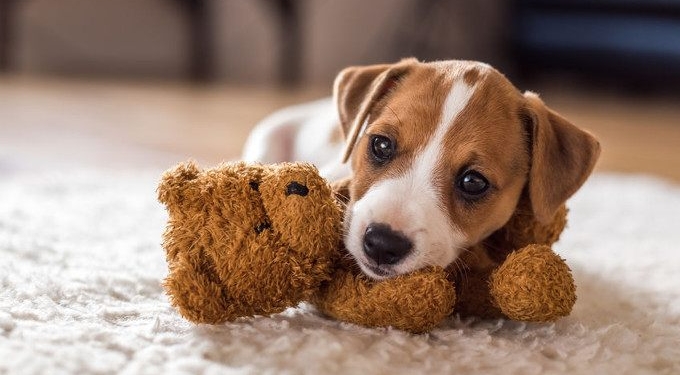
Pets can develop separation anxiety when their people are suddenly gone.
When one of my co-workers found out about a tiny, orphaned kitten that needed a home a few months ago, he didn’t hesitate to adopt it. He says his new companion helped make the months of COVID-19 isolation at home much less stressful.
He is not alone. Animal shelters and breeders across the country have reported record numbers of dog and cat adoptions in recent months.
But after my co-worker returned to work, he says his adorable kitten started urinating on the kitchen counter while he was away.
Another friend is worried about how her dog will react when she returns to the office. Her big, goofy Labrador retriever follows her everywhere, even to the bathroom. When she leaves to run a quick errand, the dog sits by the back door and whines, awaiting her return.
RELATED ARTICLE: Top 10 Tips And Techniques For Training Your Dog
What should these pet owners do?
Alleviating pet anxiety is about changing the owner’s behavior, too.
The problem with sudden changes in routine
A change in routine, such as suddenly being alone for many hours every day, is a major cause of separation anxiety for both dogs and cats.
Separation anxiety is more than a little whimpering when you head out the door. It’s major, unwanted behavior that happens every time you leave or are away.
For dogs and cats, this can mean excessive pacing, barking or howling, whimpering, or self-grooming as you get ready to leave. In some cases, it can mean urinating or defecating around the house, often in places where scents linger, such as on bedding or rugs, or destroying household items in your absence. Extreme clinginess or neediness is another symptom.
Anxious pets can get destructive.
Separation anxiety won’t go away on its own, and it can be difficult to get rid of entirely. But there are ways to manage it. As a clinical veterinarian and professor, I am often asked to help people find ways to ease their pets’ anxiety.
What not to do
First, it’s important to understand that it’s not about you – it’s about your pet. Your dog or cat is not trying to teach you a lesson or get revenge. Animals don’t act out of spite.
Instead, it’s a signal of extreme distress and frustration that should be approached like any other medical ailment. Your pet doesn’t want to experience separation anxiety any more than you want to experience its consequences.
For this reason, punishment is never the answer. For one thing, your pet won’t connect the punishment with something that happened hours – or even a few minutes – earlier. And punishment may only exacerbate your pet’s anxiety and stress.
Pets won’t connect the punishment to bad behavior that happened earlier.
Similarly, going to the opposite extreme by praising or giving affection when your pet is suffering anxiety also will make the problem worse.
The goal is to create a balanced relationship so your pet tolerates being alone. First, get your pet checked out by a veterinarian to rule out physical conditions, such as a urinary tract infection if your pet urinates in inappropriate places.
Next, make sure your pet gets plenty of exercises and mental stimulation. For dogs, this may mean a long run or brisk walk every day. Getting exercise shortly before you leave the house may put your dog in a more relaxed state while you’re gone. It’s harder to feel stressed when the endorphin levels are elevated. For cats, this could mean a change of environment by being outdoors in a safe, enclosed area such as a “catio.”
Toys can help keep pets entertained while their owners are away.
Treating separation anxiety with behavior change
Here, we’re talking about your behavior. The goal is to make your absence seem like no big deal. Making a fuss over your pet when you leave or arrive home only makes matters worse. If you treat it like it’s routine, your pet will learn to do the same.
Try to figure out when your pet starts to show signs of anxiety and turn that into a low-key activity. If it’s when you pick up your handbag, for example, practice picking it up and putting it back down several times over a few hours. Similarly, get dressed or put on your shoes earlier than usual but stay home instead of leaving right away. Try starting your car’s engine and then turning it off and walking back inside.
Avoiding drama around leaving for work can help pets acclimate to being alone.
Next, practice short absences. When you’re at home, make it a point to spend some time in another room. In addition, leave the house long enough to run an errand or two, then gradually increase the time that you’re away so that being gone for a full day becomes part of the family routine.
Changing the environment
Boredom makes separation anxiety worse. Providing activity for your pet while you’re gone, such as a puzzle toy stuffed with treats, or simply hiding treats around the house will make your absence less stressful. Other options for dogs and cats include collars and plug-in devices that release calming pheromones.
Boredom can make separation anxiety worse.
To maintain your bond while you’re gone, place a piece of clothing that you have worn recently in a prominent place, such as on your bed or couch, to comfort your pet. Similarly, you can leave the TV or radio on – there are even special programs just for pets – or set up a camera so you can observe and interact with your pet remotely. Some of these come equipped with a laser pointer or treats you can dispense.
Using supplements or medication
In some severe cases, when the animal harms itself or causes property damage, medication or supplements might be necessary. These alter the brain’s neurotransmitters to create a sense of calm.
While some are readily available without a prescription, it’s a good idea to get advice from your veterinarian to determine which are safest and most effective for your pet’s situation. Medication can help reduce anxiety, making it easier for the pet to learn new coping skills. A behavior modification plan accompanying the use of medication can help manage this problem.
Separation anxiety is difficult for both you and your pet. But a few simple changes can make a huge difference as life returns to some semblance of normal.
















